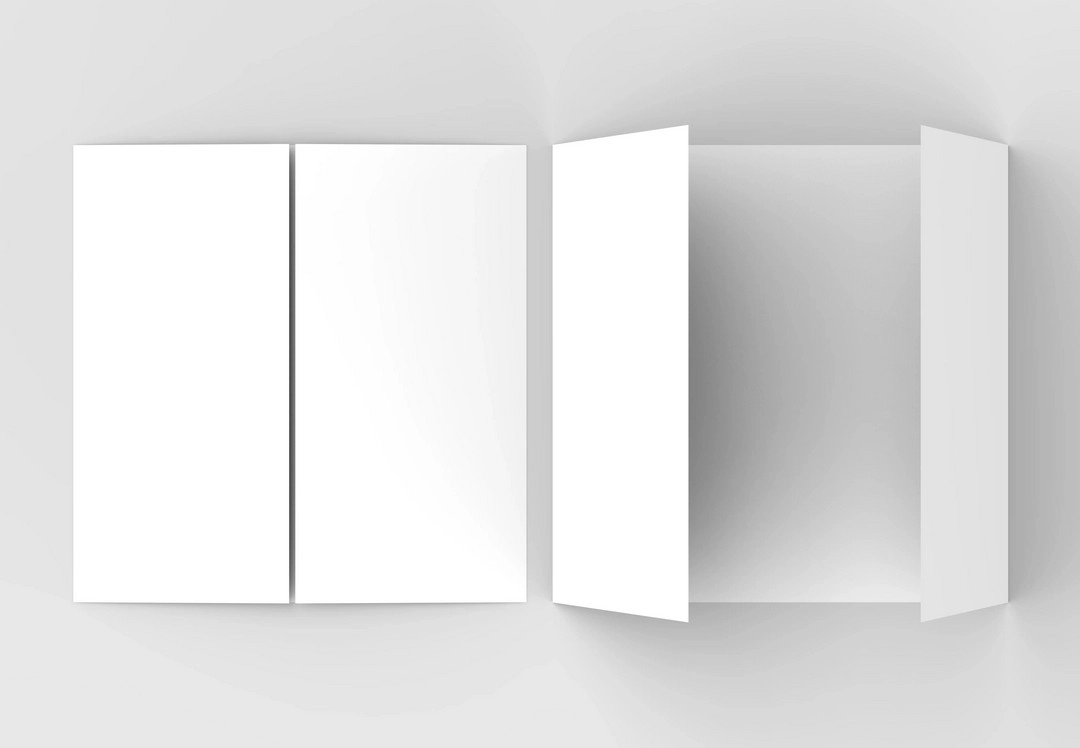All About Flyers | What, Importance, Categories, Types, Sizes, Principles, Samples, Skills, and Costs etc…
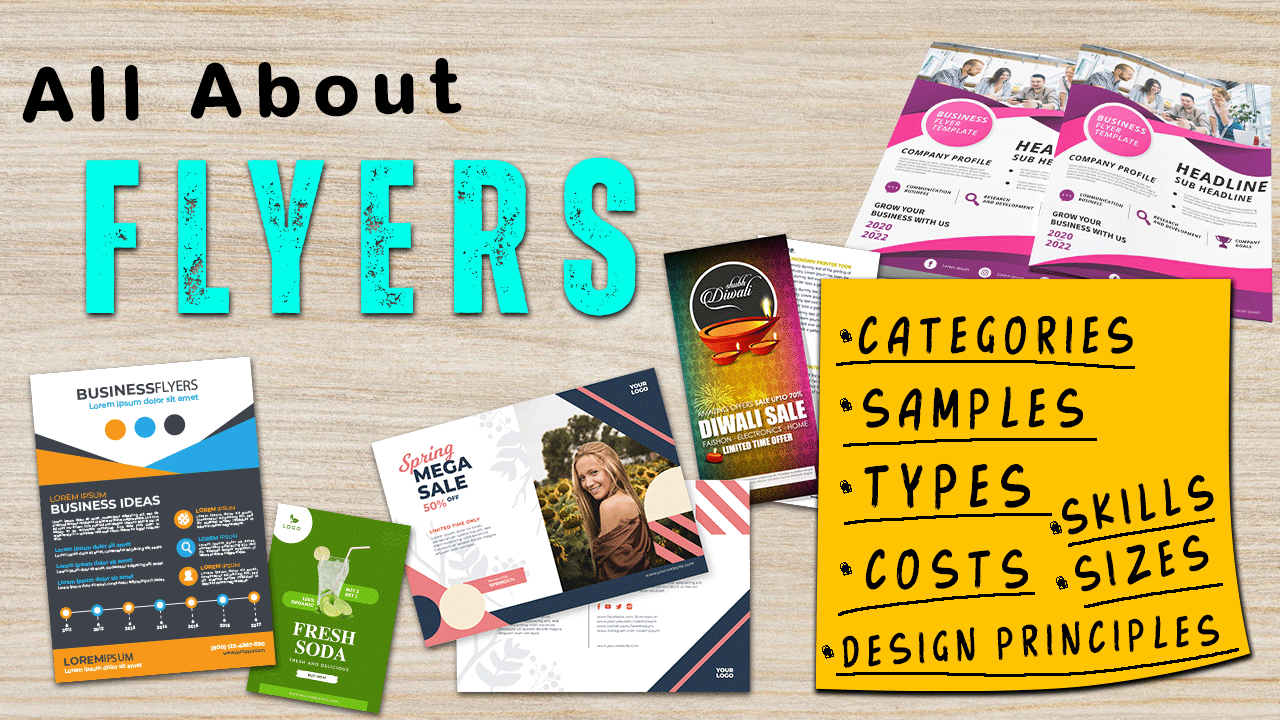
Finding a suitable flyers design is really challenging for your company. because a wide range of categories, kinds, sizes, styles, and abilities are accessible to discover the right fit for your unique requirements.
With eye-catching design and standard measurements, Flyers Design gives plenty of chances to interact with your audience and effectively communicate your message.
We’ll go into the issue of design in this comprehensive guide, covering everything from sizes of different sorts and categories accessible. Furthermore, you will find out how to use design concepts wisely and get advice on developing eye-catching pamphlets which captivate readers. In order for you to make an informed decision that fits within your budget, we will also discuss the cost considerations in Flyer’s design if you choose to get hire or provide this service on a freelance basis. We will also go over the fundamental knowledge and software required to create your concepts in a practical manner.
Definition of Flyers
“Flyer also the name of Handbill, Brochure, Leaflet
a little printed piece of paper with visual elements and text graphics.
It accomplishes a number of goals, including public awareness, brand awareness, promotion, advertising, and presenting significant, emphasized information.
Usually distributed out by hand, flyers are printed materials that interact with individuals on a physical level. Flyers are frequently used for promotional advertising. There are many different types and categories of flyers, which we shall discuss in more detail in this article.”
Benefits & Why Flyers are Important?
- Reduce Intro Time:
Consider the following situation: A prospective client wants information or to know more about your company. Alternatively, you might just give someone an interesting document to read rather than having a long talk or debate.
“Flyers are a simple and effective approach to give supplementary information and promote your company. By providing a flayer, you may interact with consumers in a productive manner. It saves a great deal of time that would be used to go over each detail one by one.”
- Budgeted cost:
Compared to web or television advertising, it is more affordable and provides several benefits for small firms, particularly in terms of cost.
- Success Rate:
Consider the following scenario: a consumer comes into the store and looking for pizza cheese, but he is not sure of the prices and the several varieties that are offered. Suddenly, a flyer with all the details on the various cheeses that a recently opened business offers, together with the pricing and exclusive discounts, is handed over. The flyer gave him encouragement, so he went to the store and made the purchase.
Imagine a moment: you are watching a movie in your restful time. suddenly, an advertisement appears on the screen. It is really distracting and irritating.
By contrast, a physical campaign is more likely to be successful because of its straightforward and educational nature.
- Target Audience:
You might target an area of the market or set of individuals who you think will be most interested in your offering.
Your marketing campaigns can become more successful. It enables more effective use of your marketing budget. rather than spending time and resources handing out brochures to those who are not likely to be interested or who live far away. Increasing your return on investment (ROI) may be accomplished by addressing the appropriate audience. You may increase sales and income for your company by focusing your money on the individuals who are most likely to convert. Reaching your marketing objectives is more successful, efficient, and effective.
Categories of Flyers & Uses
There are eight categories into which flyers are divided and each with a distinct function or set of goals. To make distinctions between categories and types is crucial. because They stand for various functional and design elements of the layer.
These are the main groups:
- Promotional Flyers:
These are designed for promoting goods and services. These category flyers focus to spark attention, promote sales, and boost attendance.
- Informational Flyers:
This category serves to inform and inform the audience by offering factual information or specifics about the subject, group, or situation.
- Event Flyers:
Event flyers are created to publicize upcoming events, such as concerts, parties, fundraisers, or community gatherings, and encourage attendance.
- Educational Flyers:
These provide particular knowledge, abilities, or information. The majority of uses for them are in training sessions, workshops, and schools.
- Corporate Flyers:
Corporations use and provide them for partner or stakeholder announcements, internal branding, corporate communications, etc.
- Non-profit Flyers:
These kinds of organizations that are non-profit groups to spread the message about their causes, increase public awareness, and collect money for charity activities.
- Product Flyers:
Are used in businesses and commercial spaces to promote certain items and draw attention to its features, advantages, and costs in an effort to draw in new clients and boost revenue.
- Service Flyers:
Individuals advertise and provide a wide range of services. such as expert services, cleaning, repairs, and consultation. The goal is to create leads and draw in customers.
Types of Flyers:
Flyers come in several forms. Such types are appropriate for all categories and designs. There are several varieties available that vary. Below, we explore some types.
- Brochure Flyers:
Usually folded into multiple sections, brochures have the appearance of a little booklet, and They are frequently used to offer detailed information on goods, services, or events.
- Leaflet:
Single pieces of paper are called leaflets, and they are often delivered by hand. also included in publications. They focused on conveying a certain message or advertising and are incredibly concise.
- Pamphlet:
They are the same as leaflets. Pamphlets are short and packed with content. It frequently includes comprehensive details on a certain subject, reason, or event.
- Postcard :
They’re made to look like traditional postcard advertisements. They had a brief introduction of advertisement on one side and an eye-catching visual and design on the other.
- Digital (e-Flyers):
They are also known as e-flyers. They are distributed via email and social media on the internet. They are essentially digital versions of the paper fliers you often see. The nice thing about them is that they may include interactive features like movies or clickable links that direct you to the website of your choice. So, they’re like a high-tech upgrade of the traditional flyers.
- Tear-off:
These kinds feature through tabs at the bottom that the receiver may tear off. Usually, these tabs provide contact details or exclusive deals. So, those who are interested can act with ease.
- Door Hanger Flyers:
They are designed to hang on the handles of the doors. To make them highly visible for residents or occupants. They often work in local advertising and promotions.
- Folded Flyers:
They are printed on large sheets of paper and folded into smaller sections that fit the hands. It offers a suitable area for lengthy messages or information.
- Single-Sided:
Name everything. These types of flyers contain content on only one side of the paper. They are often used for quick promotions. also, for simple messages. specific and short content offered on these types of flyers.
- Double-Sided:
Both sides of the paper provide content that serves as a means of informing readers about promotions or other information. There are some textual, detailed, and visual elements.
Sizes of Flyers and Examples:
There are tons of sizes for different types of flyers and subtypes. It is difficult to choose the best size according to your needs and budget. Each serves a different purpose depending on the amount of information you need to convey and the space available for distribution.
It is important to evaluate the design and layout. This can significantly affect its ability to capture the attention of your target audience.
Ultimately, the appropriate size for your flyer will be determined by your marketing campaign’s unique goals and objectives.
Brochure Flyers Sizes:
There are five varieties of brochures, each with a different size and design. Brochures: Half-Fold, Tri-Fold, Z-Fold, Gate-Fold, and Accordion-Fold.
We describe these styles in the image below.
Standard Tri-Fold Brochure:
This type is divided into three parts, and it is foldable.
The first page fold up on the second page and the third page up the second and first page that or folded
Standard Dimension:
1056 pixels wide & 816 pixels height.
The width of the flayer is divided into 3 parts equally: And one part is 352 Pixels wide
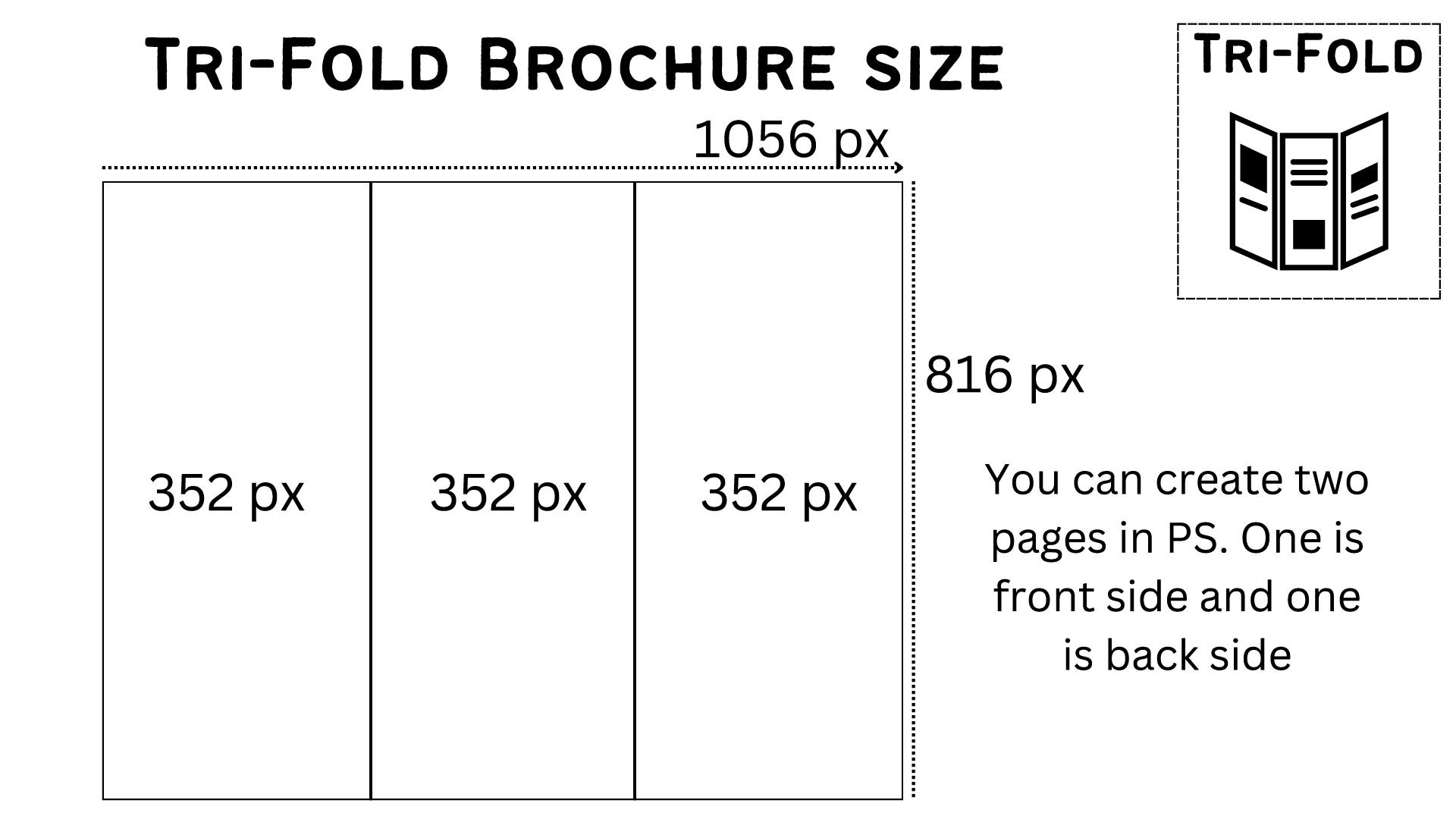
Example:
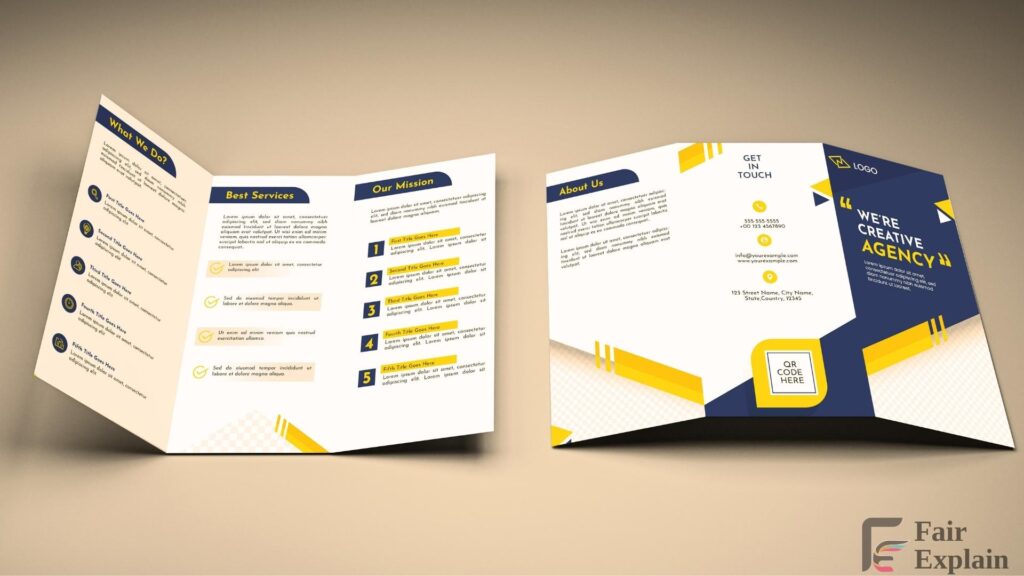
Half-Fold Brochure:
This type is divided into two parts, and it is foldable.
The first page fold up on the second page.
Standard Dimension:
1056 pixels wide & 816 pixels height.
The width of the flayer is divided into 2 parts equally: And one part is 528 Pixels wide
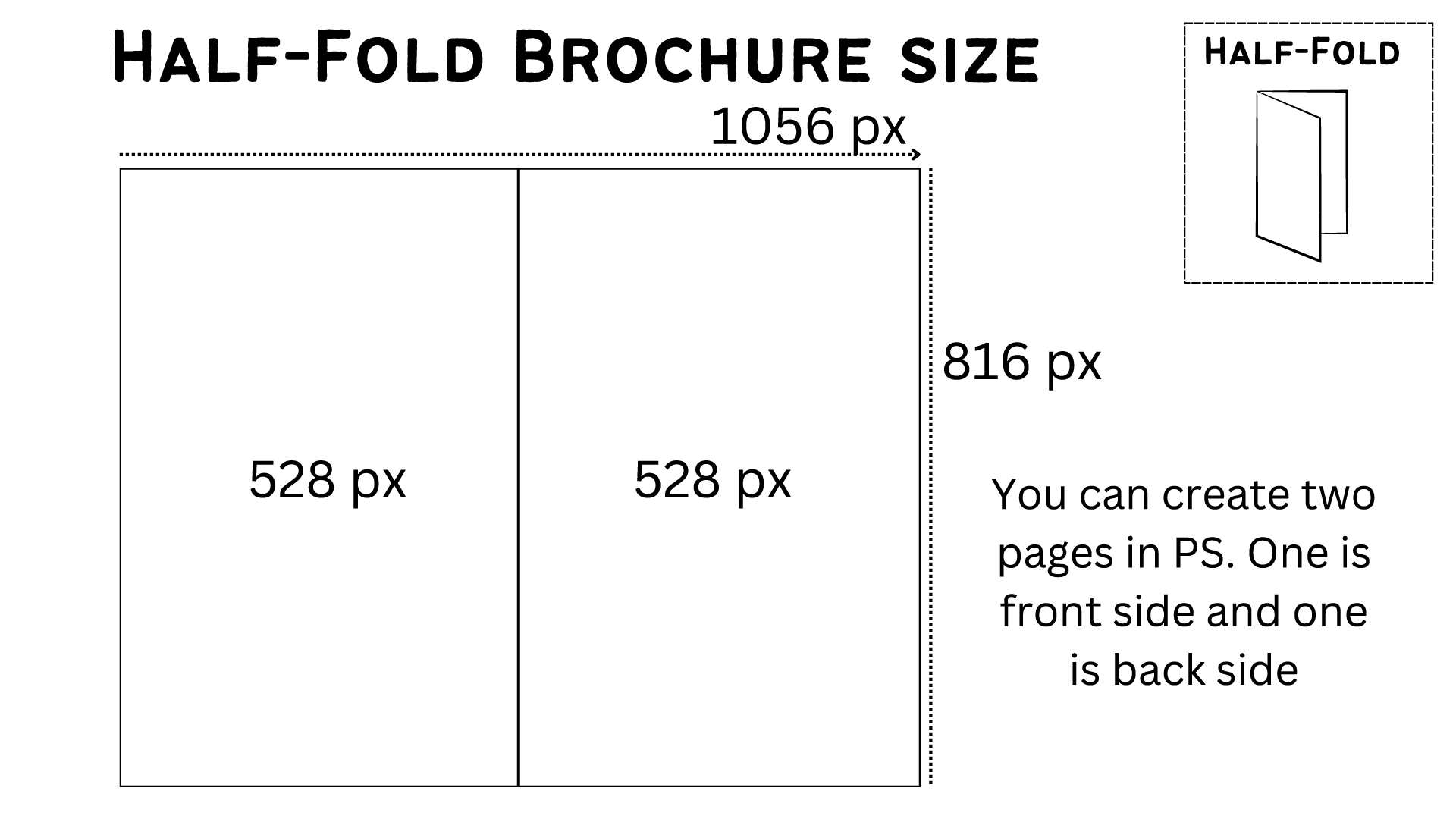
Example:

Z-Fold Brochure:
This type is divided into Three parts, and it is foldable.
This is same as Tri-Fold but the difference folding and somewhat design with the folding compatibility.
The first page fold up on the second page. And the third page below the second page.
Standard Dimension:
1056 pixels wide & 816 pixels height.
The width of the flayer is divided into 3 parts equally: And one part is 352 Pixels wide
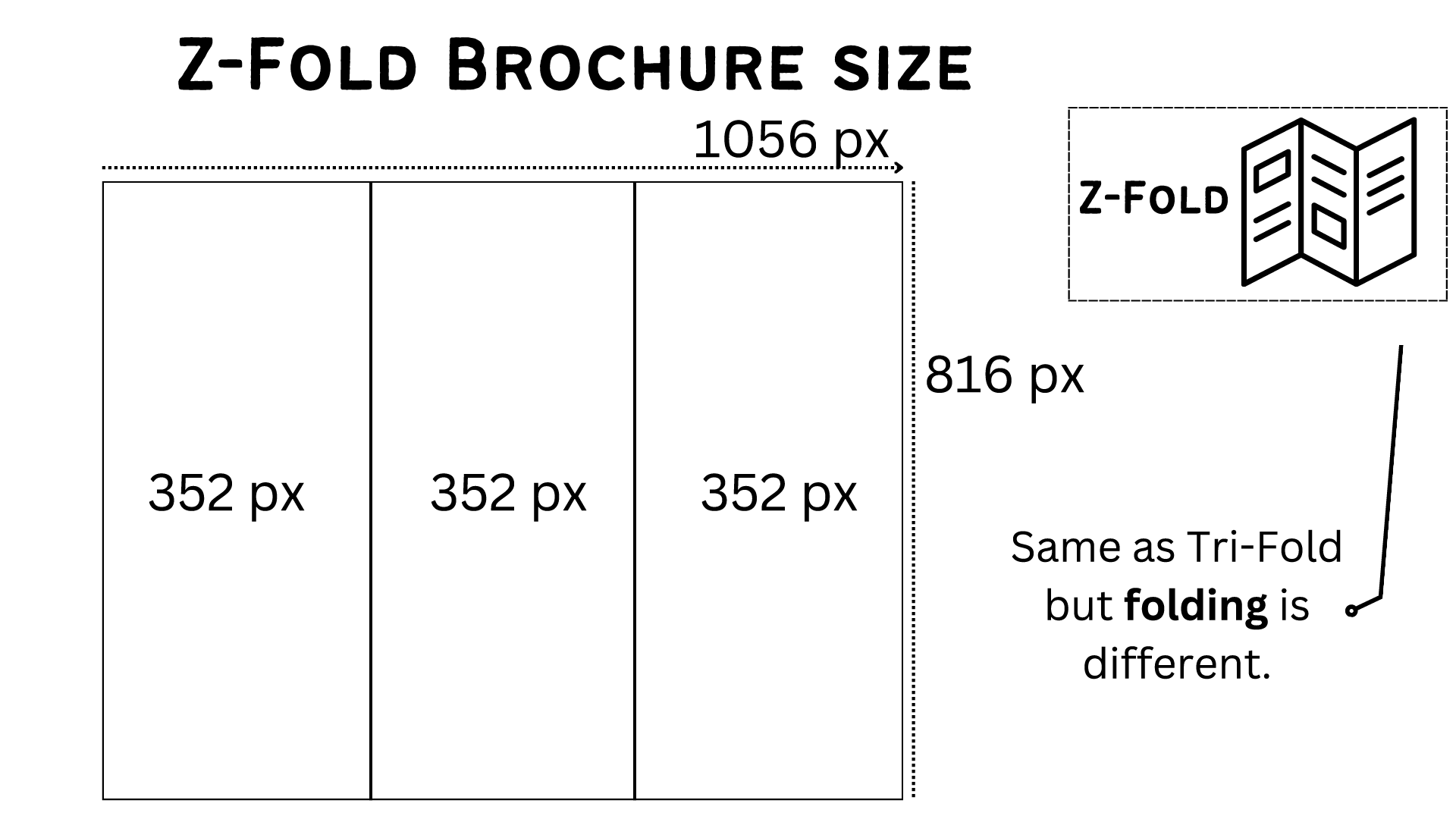
Example:
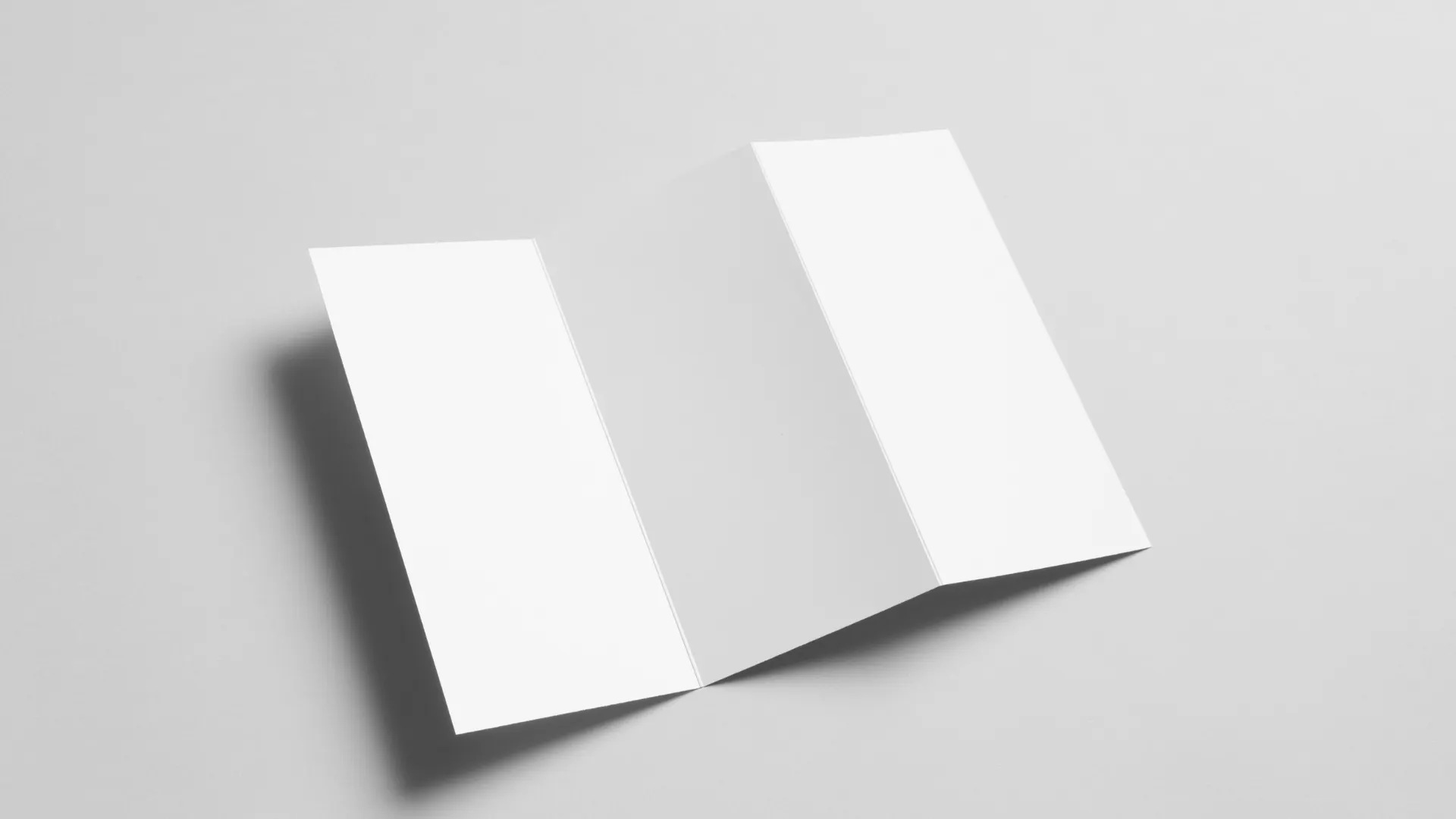
Gate-Fold Brochure:
This type is divided into Three parts, and it is foldable.
Its open like double door. The first and third part are small sized. And the second or middle part is on large size. when you add 1st and 3rd part dimensions then this dimension is on middle side.
The first page fold up on the half of second page. And the third page on the half of the second page.
Perfect for dramatic presentations or product launches.
Standard Dimension:
1056 pixels wide & 816 pixels height.
The width of the flayer is divided into 3 parts: First & Third part is 264 pixels width and the Middle or Second part is 528 pixels wide.
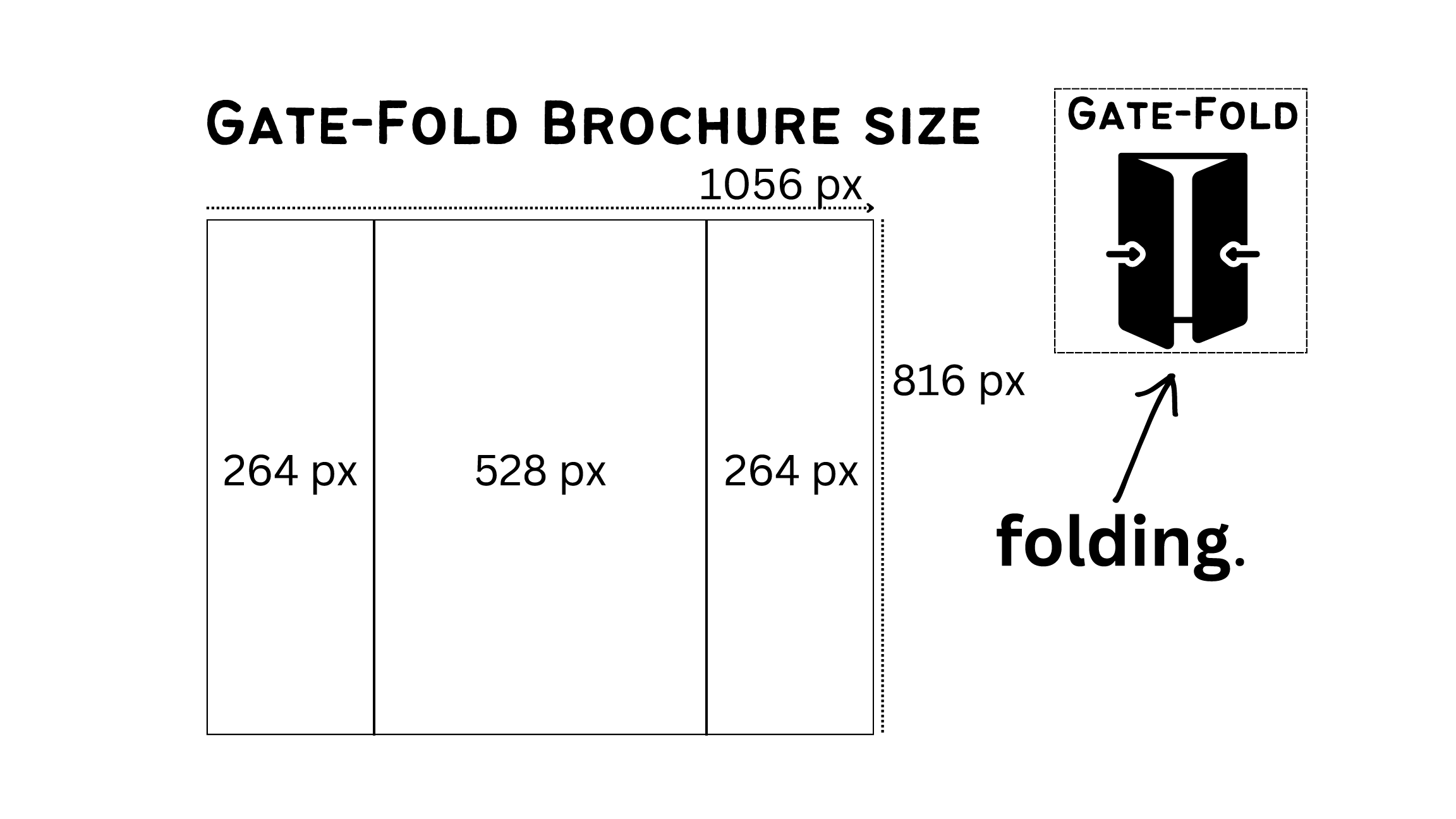
Example:
